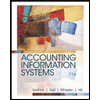
Concept explainers
1. a.
Dollar-Value-LIFO: This method shows all the inventory figures at dollar price rather than units. Under this inventory method, the units that are purchased last, are sold first. Thus, it starts from the selling of the units recently purchased and ending with the beginning inventory.
Retail inventory method: It takes into account all the retail amounts that is, the current selling prices. Under this method, the goods available for sale, at retail is deducted from the sales, at retail to determine the ending inventory, at retail.
To Explain: the advantages of using the dollar-value LIFO method as opposed to the traditional LIFO method.
1. b.
To Explain: the difference in the application of the dollar-value LIFO method and the application of the traditional LIFO method.
2.a.
To Explain: the treatment of the net mark ups and net markdowns in the calculation of the cost-to-retail percentage used to determine the estimated cost of its ending retail inventories.
2.b.
To explain: the reason for the retail inventory method of Company H approximates lower of average cost or market.
Want to see the full answer?
Check out a sample textbook solution
Chapter 9 Solutions
Intermediate Accounting
- PARRISH MODULE 5 INVENTORY-DIFFERENCES Please explain the differences between the following transactions. Both involve reduction in price of imperfect inventory but different accounts are used. In Transaction 2 the Periodic and Perpetual Method accounts used are exactly the same. Would you please explain, point out the differences and why they are recorded differently. Transaction 1. Reduction in price of imperfect inventory for $10 Periodic Method Accounts Payable or Cash 10 Purchase Allowances 10 Perpetual Method Accounts Payable or Cash 10 Inventory 10 Transaction 2. Reduction in price of imperfect items sold for $53; reduction allowed is $25 Periodic Method Sales Allowances 25 Accounts Payable or Cash 25 Perpetual Method Sales Allowances 25 Accounts Payable or Cash 25arrow_forward6arrow_forwardCp 6-4arrow_forward
- Question 9 of 40 A(n)_ is a refund of a portion of, but not all of, the sales price of an item. A. sales allowance B. uncollectable account C. sales return D. sales order SUBMITarrow_forwardProblem 11-25 Multiple choice (IAA) 1. IFRS prohibits which cost flow assumption? a. LIFO b. Specific identification 6. Weighted average i Any of these cost flow assumptions is allowed с. , What is the inventory pricing procedure in which the oldest costs rarely have an effect on the ending inventory? a. FIFO b. LIFO c. Specific identification d. Weighted average 3. In a period of falling prices which inventory method generally provides the lowest amount of ending inventory? a. Weighted average b. FIFO c. Moving average d. Specific identification 4. Which inventory cost flow assumption would consistently result in the highest income in a period of rising prices or inflation? a. FIFO b. LIFO c. Weighted average d. Specific identification 3. The costing of inventory must be deferred until the end of reporting period under which of the following method of inventory valuation? a. Moving average b. Weighted average c. LIFÓ perpetual d. FIFO perpetualarrow_forwardSh6 Please help me. Solution.arrow_forward
- 4arrow_forwardPlease help mearrow_forwardQUESTION 11 Match the term on the left to the appropriate description on the right. v Cost of goods available for sale (COGAS) A. A valuation rule applied to ending inventory. v LIFO reserve B. The maximum value that cost of goods sold (COGS) can be in a period. C. The amount by which inventory measured under FIFO would exceed inventory measured under LIFO v Lower-of-cost-or-market v Inventory turnover ratio. D. An inventory cost flow assumption. E. A measure for evaluating a company's inventory management. v FIFO (first-in, first out) v Periodic inventory F. A system for calculating COGS based on ending inventory value.arrow_forward
- Multiple Choice Question 121 Marigold Company developed the following information about its inventories in applying the lower-of-cost-or-net realizable value (LCM) basis in valuing inventories: Net realizable Product Cost value A $112000 $123000 B 84000 76000 C 155000 160000 If Marigold applies the LCNRV basis, the value of the inventory reported on the balance sheet would be $351000. $343000. $359000. $367000.arrow_forwardQ.8arrow_forwardSubject:accarrow_forward
 Accounting Information SystemsFinanceISBN:9781337552127Author:Ulric J. Gelinas, Richard B. Dull, Patrick Wheeler, Mary Callahan HillPublisher:Cengage Learning
Accounting Information SystemsFinanceISBN:9781337552127Author:Ulric J. Gelinas, Richard B. Dull, Patrick Wheeler, Mary Callahan HillPublisher:Cengage Learning Intermediate Accounting: Reporting And AnalysisAccountingISBN:9781337788281Author:James M. Wahlen, Jefferson P. Jones, Donald PagachPublisher:Cengage Learning
Intermediate Accounting: Reporting And AnalysisAccountingISBN:9781337788281Author:James M. Wahlen, Jefferson P. Jones, Donald PagachPublisher:Cengage Learning Financial & Managerial AccountingAccountingISBN:9781285866307Author:Carl Warren, James M. Reeve, Jonathan DuchacPublisher:Cengage Learning
Financial & Managerial AccountingAccountingISBN:9781285866307Author:Carl Warren, James M. Reeve, Jonathan DuchacPublisher:Cengage Learning Individual Income TaxesAccountingISBN:9780357109731Author:HoffmanPublisher:CENGAGE LEARNING - CONSIGNMENT
Individual Income TaxesAccountingISBN:9780357109731Author:HoffmanPublisher:CENGAGE LEARNING - CONSIGNMENT Cornerstones of Financial AccountingAccountingISBN:9781337690881Author:Jay Rich, Jeff JonesPublisher:Cengage Learning
Cornerstones of Financial AccountingAccountingISBN:9781337690881Author:Jay Rich, Jeff JonesPublisher:Cengage Learning




